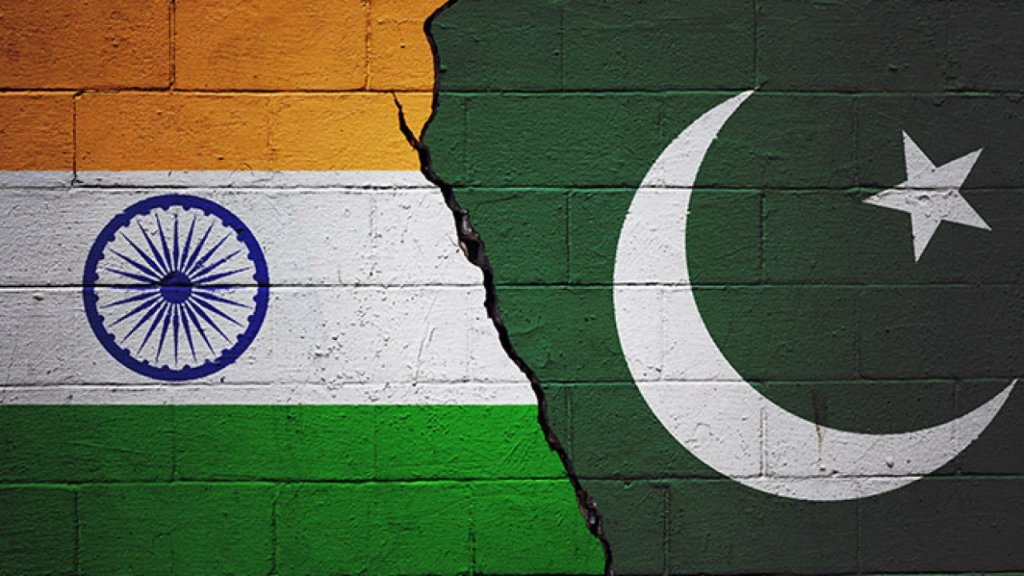Understanding The India-Pakistan Ceasefire Agreement

Table of Contents
Historical Context of the India-Pakistan Ceasefire Agreement
The India-Pakistan ceasefire agreement is deeply rooted in the turbulent history of the region. The First Kashmir War (1947-48), following the 1947 Partition of India, resulted in a ceasefire line, a temporary demarcation that evolved into the present-day Line of Control (LoC). This line, however, remains a contentious issue, a constant reminder of the unresolved Kashmir dispute. The 1971 war and the subsequent Shimla Agreement further shaped the dynamics of the relationship, though the underlying tensions and territorial claims persisted. Numerous smaller conflicts and skirmishes punctuated the years between these major events, creating a volatile backdrop for any attempt at lasting peace. Understanding this historical context is essential to grasping the complexities of the current ceasefire situation.
- Key Dates:
- 1947: Partition of India and the beginning of the First Kashmir War.
- 1949: First ceasefire agreement along the Line of Control (LoC).
- 1965: Indo-Pakistani War.
- 1971: Indo-Pakistani War and the Shimla Agreement.
- Significant Figures: Jawaharlal Nehru, Muhammad Ali Jinnah, Indira Gandhi, Zulfikar Ali Bhutto played critical roles in shaping the early phases of the conflict and subsequent agreements.
- Territorial Disputes: The core dispute centers on the status of Kashmir, claimed in whole or in part by both India and Pakistan.
Terms and Conditions of the Ceasefire Agreement
The India-Pakistan ceasefire agreement, while lacking a formal, comprehensive treaty, is a de facto arrangement primarily defined by the 1949 ceasefire and subsequent understandings. The agreement establishes the Line of Control (LoC) as the boundary separating Indian and Pakistani controlled territories in Kashmir. Key terms include restrictions on military activity along the LoC, although the interpretation and enforcement of these restrictions have been consistently challenged. The UN Military Observer Group in India and Pakistan (UNMOGIP) plays a monitoring role, though its influence is limited.
- Specific Clauses: The agreement, though not explicitly documented, generally prohibits large-scale troop movements and major offensive military actions along the LoC.
- Rules of Engagement: These are often vaguely defined and subject to frequent breaches and varying interpretations by both sides.
- Dispute Resolution: The agreement lacks clear mechanisms for resolving disputes or addressing ceasefire violations effectively, contributing to persistent tensions.
Violations and Escalations of Tensions
Ceasefire violations along the Line of Control are a recurring feature of India-Pakistan relations. Both sides have been accused of violating the agreement, ranging from sporadic firing incidents to more significant escalations. These violations often lead to casualties among civilian populations living in border areas. Cross-border terrorism, often cited as a major factor contributing to tensions, fuels the cycle of violence and further complicates attempts at maintaining peace.
- Notable Violations: Several incidents, including significant escalations and cross-border incursions, have resulted in substantial loss of life and heightened regional tensions.
- Causes and Motivations: Violations stem from various factors, including territorial disputes, cross-border terrorism, strategic maneuvering, and internal political pressures.
- Impact: Ceasefire violations undermine regional stability, damage diplomatic relations, and hinder efforts towards lasting peace.
Implications and Future Prospects of the Ceasefire Agreement
The current status of the ceasefire agreement is precarious. Maintaining peace and stability in the region requires addressing the underlying causes of conflict, including the Kashmir dispute. Strengthening the agreement necessitates effective mechanisms for addressing violations and building trust between the two nations. Dialogue, facilitated possibly by the international community, is crucial for finding lasting solutions.
- Potential for Future Negotiations: While fraught with difficulties, renewed dialogue and negotiation are essential for mitigating future conflict and establishing more durable peace.
- Role of the International Community: International pressure and mediation efforts can play a vital role in facilitating dialogue and de-escalation.
- Long-Term Implications: The future of the ceasefire agreement directly impacts regional security, economic development, and the well-being of the populations living along the Line of Control.
Conclusion
Understanding the India-Pakistan ceasefire agreement is crucial for comprehending the complex dynamics of India-Pakistan relations. Its history reveals a long and troubled path marked by conflict and attempts at peacemaking. The agreement's terms, though often loosely defined, provide a framework, however fragile, for managing the ongoing tensions. Repeated violations and the unresolved Kashmir dispute highlight the challenges in achieving lasting peace. Further research into the historical context and the ongoing challenges facing this agreement is vital for informed discussions and for advocating for peaceful resolutions. Understanding the intricacies of the India-Pakistan ceasefire agreement is crucial for fostering lasting peace in the region. Continue your exploration of this vital topic by researching further into the historical context and ongoing challenges to the agreement.

Featured Posts
-
 James O Keefes Undercover Investigation New Trouble For Prince Andrew
May 12, 2025
James O Keefes Undercover Investigation New Trouble For Prince Andrew
May 12, 2025 -
 Who Could Be The Next Pope Leading Candidates And Their Platforms
May 12, 2025
Who Could Be The Next Pope Leading Candidates And Their Platforms
May 12, 2025 -
 From Cabin Crew To A Former Sia Stewardesss New Path
May 12, 2025
From Cabin Crew To A Former Sia Stewardesss New Path
May 12, 2025 -
 John Wicks Las Vegas Adventure Become Baba Yaga
May 12, 2025
John Wicks Las Vegas Adventure Become Baba Yaga
May 12, 2025 -
 De Uruguay A China Tres Toros Como Obsequio Del Presidente A Xi Jinping
May 12, 2025
De Uruguay A China Tres Toros Como Obsequio Del Presidente A Xi Jinping
May 12, 2025
Latest Posts
-
 Keep The Road Open A Realistic Appeal To Tasman Council
May 13, 2025
Keep The Road Open A Realistic Appeal To Tasman Council
May 13, 2025 -
 Tasman Council Realistic Assessment Needed For Key Road
May 13, 2025
Tasman Council Realistic Assessment Needed For Key Road
May 13, 2025 -
 Truckies Realistic Plea To Keep Key Tasman Road Open
May 13, 2025
Truckies Realistic Plea To Keep Key Tasman Road Open
May 13, 2025 -
 Tasman Council Road Closure A Truckies Plea For Realism
May 13, 2025
Tasman Council Road Closure A Truckies Plea For Realism
May 13, 2025 -
 Sissals Vej Til Eurovision 2025 En Dansk Sanghistorie
May 13, 2025
Sissals Vej Til Eurovision 2025 En Dansk Sanghistorie
May 13, 2025
